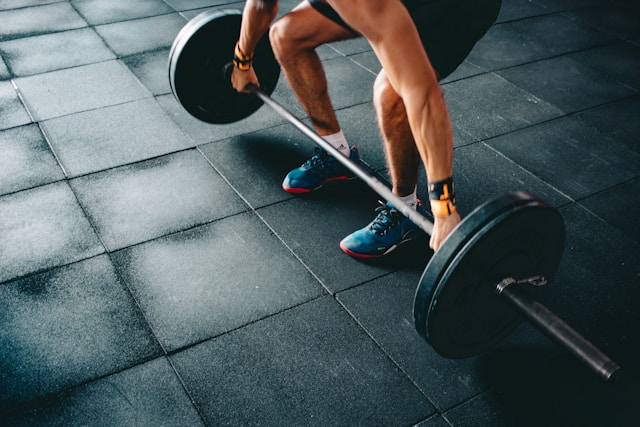Roll More, Hurt Less: The Grappler’s Longevity Guide
"It does not matter how slowly you go as long as you do not stop."
Confucius put it plainly. And that mindset fits perfectly with Brazilian Jiu-Jitsu.
The people who truly grow in this sport aren’t always the strongest, the fastest, or the most gifted. More often, they are the ones who find a way to keep training. Week after week. Year after year.
That kind of consistency doesn’t come from toughness alone. It comes from looking after the body. Training in ways that support recovery. Building small daily habits that will allow long-term progress.
Those who stick with BJJ for the long haul usually have some things in common. They warm up properly. They include strength training in their week. They eat enough to recover. They take sleep seriously. And they listen when their body asks for a break.
This isn’t about running full throttle every session. It’s about staying in the game. Not rushing to blue belt. Still rolling five or ten years later. That’s how real skill is built.
What follows isn’t a checklist of flashy hacks. It’s a guide to boring, reliable stuff. The kind of quiet discipline that keeps people training when others burn out.
Essential Prehab and Recovery
BJJ puts the body through a lot. Grappling, twisting, pressure, it all adds up. That’s why prevention matters.
Prehab is about preparing the body before injuries happen. It’s how you build durability. Rehab, on the other hand, is what comes after something breaks. Better to avoid that path when possible. "an ounce of prevention is worth a pound of cure".
Build a Strong Core and Pay Attention to Old Injuries
A solid core helps with movement, balance, and injury prevention.
Try a few of these:
- McGill Big Three (bird-dog, side planks, curl-ups)
- Farmer carries
- Balance drills like kneeling on a yoga ball
Even a short routine a few times a week can go a long way.
If you’ve had issues with your knees, shoulders, or back in the past, stay on top of them. Stick with the exercises your physiotherapist or doctor recommends. A bit of prevention can save you months of downtime.

Don’t Skip Strength Work
Lifting weights isn’t about getting huge. It’s about keeping your body ready for the strain of grappling. Strength training supports the joints, improves control, and helps prevent wear and tear.
You don’t need to live in the gym. Two quick sessions per week is enough. Focus on:
- Squats
- Deadlifts
- Bench press
- Rows
These movements build real-world strength you’ll feel during training.
Sleep Fuels Everything
Recovery starts with rest. Aim for seven to nine hours a night. Without proper sleep, everything else, diet, training, recovery, suffers.
Better sleep means better BJJ. We will keep this section short and sweet as it is easy to apply and the specifics could warrant an article in its own right.
The Epsom Salt Debate
Some grapplers find relief in Epsom salt baths. The magnesium in the salts may play a role, but it could also be the warm water that helps most.
To give it a try:
- Add two cups of Epsom salt to a warm bath
- Soak for 15 to 20 minutes
It’s a simple habit that might ease soreness and help you relax post-training.
Feed Your Recovery
Muscles need fuel to repair and grow. Nutrition matters. Skipping meals or under-eating can slow progress.
General tips:
- Get at least 50 grams of protein daily
- After training, eat a balanced meal with protein, carbs, and healthy fats
Even if you’re trying to lose weight, a small calorie deficit is better than cutting too hard.
Increase Training Slowly
It’s tempting to dive into more sessions when you're motivated, but rapid jumps in volume often lead to injury.
Instead:
- Start with one or two sessions a week
- Add more only when your body feels ready
Let your training habits build naturally.
Work on Mobility and Flexibility
Tight muscles and stiff joints can cause strain and injury. A little mobility work helps keep everything moving smoothly.
Try adding:
- Dynamic stretches before training
- Hip and shoulder drills
- Foam rolling after challenging sessions
Short, regular efforts are better than occasional long sessions.

Use the Free Stuff
Recovery doesn’t need to be expensive. Plenty of high-quality resources are easy to access:
- YouTube has great mobility and strength routines
- Online BJJ forums are full of tips
- Local libraries often have fitness books worth checking out
Don’t overthink it. Use what is available.
This article offers general guidance on staying healthy in BJJ. But it isn’t medical advice. If you’re dealing with pain or something that doesn’t feel right, speak to a qualified medical professional.
Staying on the mats takes more than willpower. It takes care. Look after your body, and you’ll give yourself the best chance to train for years to come. BJJ is a long game. Staying healthy is what lets you keep playing it.
